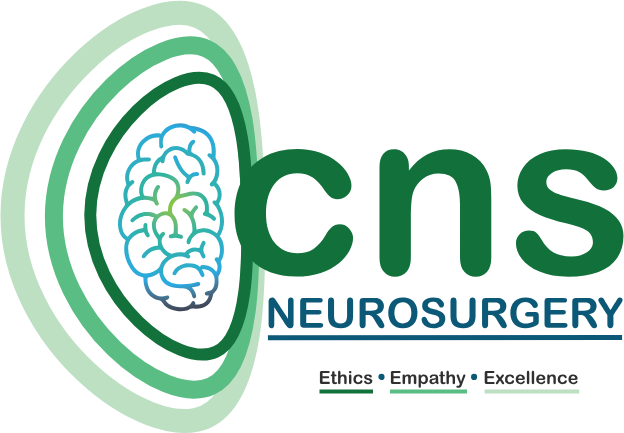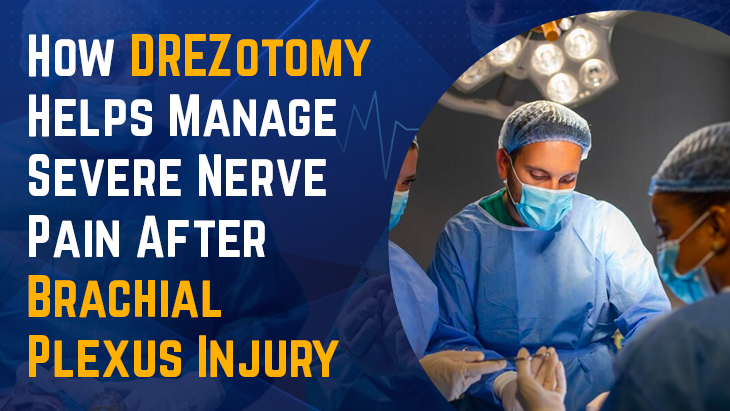Following a brachial plexus injury, severe nerve pain can be life-altering. Patients sometimes characterize the pain as electric shocks radiating through the arm and hand, burning, stabbing, or something else entirely. Many people find this suffering unrelenting and unaffected by drugs, rehabilitation, even nerve repair operations. A specialized neurosurgical operation known as DREZotomy gives hope for long-term pain relief when standard treatments fail.
But just what is DREZotomy exactly? How does that work? And for whom is it meant? Let’s explore this less-known but quite successful neurosurgical alternative.
Recognizing the Problem: Deafferentation Pain and Brachial Plexus Injury
Originating in the spinal cord, the brachial plexus is a network of nerves regulating sensation and movement in the hand, arm, and shoulder. A severe trauma—such as a fall or motorcycle accident—can tear or avulse these nerves from the spinal cord, causing brachial plexus avulsion. The limb that is affected becomes numb and paralysed when this occurs.
But in some patients the damage sets off a unique kind of pain known as deafferentation pain, a kind of neuropathic pain brought on by peripheral to brain loss of sensory input. This causes the brain to misfire pain signals in the limb devoid of any real physical cause. The brain seems to reject accepting that the arm is no longer connected.
Sadly, this pain is sometimes severe, relentless, and resistant to physiotherapy, nerve blocks, and common painkillers.
DREZotomy: A Targeted Neurosurgical Solution
Dorsal Root Entry Zone lesioning is abbreviated DREZotomy. This neurosurgical operation exactly targets the dorsal root entrance zone, the area in the spinal cord where sensory nerve fibers from the injured limb once entered.
Under DREZotomy, a neurosurgeon destroys aberrant nerve circuits in this zone responsible for producing pain using microsurgical techniques or radiofrequency lesioning. This helps the brain’s faulty pain signals to be essentially “turned off” at their source.
This surgery does not seek to bring the paralyzed limb back to use. Rather, its main objective is to alleviate avulsion injuries-related chronic, intolerable pain in patients without hope of sensory recovery.
DREZotomy: How Is It Done?
A highly specialized operation, DREZotomy has to be carried out by a qualified functional neurosurgeon.
Step-by-step overview:
- Evaluation Before Operations: MRI and CT myelography among other detailed imaging techniques help to verify root avulsion and degree of damage. The patient gets a neurological exam and comprehensive pain assessment.
- Methodological Approach in Surgery: The patient’s posture lets one reach the cervical spine. The spinal cord is exposed at the pertinent level by a laminectomy—removal of a portion of the vertebral bone.
- Lesioning Microsurgically: The surgeon finds the dorsal root access zone under an operating microscope. Lesioning is done precisely with a microsurgical knife, coagulator, or radiofrequency probe.
- After Operations: After surgery, patients are closely watched for neurological changes. Most say their pain intensity dropped significantly over days to weeks.
Who would be a perfect candidate?
DREZotomy isn’t for every patient experiencing nerve pain. Usually reserved for:
- Patients suffering from complete brachial plexus avulsion injuries
- Those experiencing extreme, intractable deafferentation pain
- Patients without hope for recovering motor or sensory ability in the limb of damage
- Those who have run out of other medical or surgical options for pain
Results and Relief from Pain
Often with notable improvement in quality of life, DREZotomy has been demonstrated in numerous studies to provide pain relief in 70–80% of patients. While some patients claim total pain relief, others show significant decrease that lets them start their daily activities once more.
Results can vary, though, much as with any surgery. Outcomes depend on elements including the degree of the damage, length of pain, and patient condition. Crucially, the operation should only be taken into consideration following thorough consultation with a neurosurgeon qualified in brachial plexus injuries.
Risks and Considerations
DREZotomy involves some risks, as with any spinal surgery:
- Weakness or declining motor ability (if none already absent)
- Numbness in corresponding dermatomes
- Leaky cerebrospinal fluid
- Bleeds or infection
But in carefully chosen patients, especially when chronic pain is severely incapacitating and unresponsive to other treatments, the advantages usually exceed the hazards.
In Conclusion
Treating one of the most challenging neuropathic pain syndromes, chronic deafferentation pain following brachial plexus avulsion is DREZotomy provides a focused, efficient, and usually life-changing answer for patients who have lost not only function but also peace from unrelenting pain.
Though it does not restore sensation or movement, what it returns—relief, rest, and mental health—is also quite priceless. See a specialized neurosurgeon about DREZotomy if you or someone you know are experiencing this kind of nerve pain to start the road toward recovery.
Take the First Step Toward Pain Relief
Leading the best neurosurgeon in Ahmedabad, Dr. Chirag Solanki has a great experience of treating difficult brachial plexus injuries and intractable neuropathic pain using cutting-edge techniques including DREZotomy. Schedule your consultation and start toward a life free of pain.

